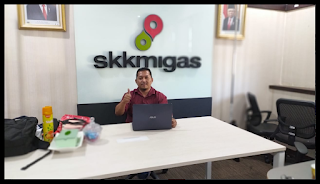The Special Task Force for Upstream Oil and Gas Business Activities (SKK Migas) stated that the success of achieving the target of 1 million barrels per day (BPD) in 2030 depends on additional incentives from the government.
Without additional incentives, oil production will only be around 500 thousand BPD in 2030.
Head of SKK Migas Dwi Soetjipto said, referring to Wood Mackenzie, Indonesia's oil and gas prospectivity rating is still very good, although a bit low. However, based on IHS Markit's research, the country's risk rating and the national fiscal system are considered to continue to decline from year to year. With the potential for oil and gas, this fiscal improvement is the key for Indonesia to work on its oil and gas prospects. Moreover, oil production has continued to decline over the last 20 years.
"So far, it is known that we have 128 basins and only 20 basins are producing. "This should be our concern whether we will just accept the decline," he said in a meeting with Commission VII on the energy sector of the House of Representatives.
He explained, according to the projections prepared by his party, oil production could be increased to 1 million BPD in 2030 if there were flexible and competitive incentives provided. On the other hand, without incentives, the projection results show that national oil production will only reach the range of 500 thousand BPD in 2030. The same thing he said applies to gas production, although the conditions are better. Without incentives, national gas production is relatively stable in the range of 6 billion standard cubic feet per day / BSCFD until 2030. However, if you want this gas production to increase, incentives are still needed.
"Providing flexible, competitive, and case-by-case incentives does not eliminate the obligation to seek massive potential, implement aggressive and efficient work programs, and run other enablers such as completing permits, land, and others," Dwi said.
He added that the government is committed to improving the national oil and gas investment climate, including the provision of incentives for oil and gas companies. In fact, the meeting related to this matter was directly chaired by the Minister of Energy and Mineral Resources (ESDM) Arifin Tasrif.
"There are currently intense discussions led by the Minister of Energy and Mineral Resources about this incentive and how to make Indonesia's upstream oil and gas investment increase or have a strong appeal higher than other countries, "he said.
So far, several improvements have been made to encourage oil and gas exploration. In detail, the availability of subsurface data, data openness, promotion of potential areas through roadshow investors and virtual data rooms which are still in preparation, as well as exploration funding from a firm work commitment (COW) of US $ 1.7 billion and the transfer of the remaining KKP for open area exploration.
Meanwhile, to maintain the economy of the oil and gas project, Dwi revealed, there are several incentives that have been implemented. First, the elimination of Liquefied natural gas / LNG State Revenue Tax according to Government Regulation number 48 of 2020. Furthermore, the elimination of the cost of utilizing state property in accordance with the Minister of Finance Regulation number 140 of 2020.
"Then fiscal flexibility through investment incentives such as full price DMO, accelerated depreciation and split changes, so far have been given to the Mahakam Block, South Natuna Sea B, and Sanga-Sanga," he explained.
Meanwhile, the incentives that are still under discussion are postponement or reduction of indirect taxes of up to 100%, elimination of costs for utilization of the Badak LNG Plant, tax holidays for income tax (PPh), assume and discharge, and tax allowances, as well as support for upstream oil and gas supporting industries.
Strong Planning
Member of Commission VII in the energy sector of the Indonesian House of Representatives, Maman Abdurrahman, stated that Commission VII fully supports SKK Migas, which has set a production target of 1 million BPD in 2030. However, his party reminded SKK Migas to seriously work on this target. Moreover, in the last four years, the national oil production has not increased.
"Our national oil production greatly affects our macro assumptions. I am only one, I see a downward trend in production, that the planning team must really pay attention to. We don't want to be just lip service. So, the planning team must be strengthened, "he said.
According to the Deputy Chairperson of Commission VII in the energy sector of the Indonesian House of Representatives Ramson Siagian, in the last three years, the realization of national oil production has always missed planned by SKK Migas. In view of this, he assesses that the target of 1 million BPD seems unrealistic. For that, planning at SKK Migas must be strengthened.
"This is like wishful thinking, unrealistic. I see a reliable Enhanced Oil Recovery, not new exploration, ”said Ramson.
Director-General of Oil and Gas at the Ministry of Energy and Mineral Resources (ESDM), Tutuka Ariadji, previously said that a production target of 1 million BPD of oil and 12 BSCFD of gas is needed to ensure energy supply in the future. This target setting refers to national energy needs. Although at the same time the government is also encouraging the development of the electric vehicle ecosystem, this does not mean that the two targets are in conflict. Moreover, the transition to electric vehicles cannot occur significantly in a short period of time.
"Currently, our oil needs are around 1.6 million BPD, production 700 thousand BPD. We even produce up to 1 million BPD, still not a lot. Even electric cars cannot suddenly develop a large amount, "he said.
Investor Daily, Page-10, Monday, Feb 8, 2021



















